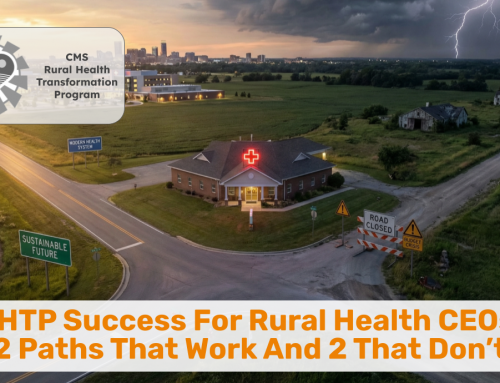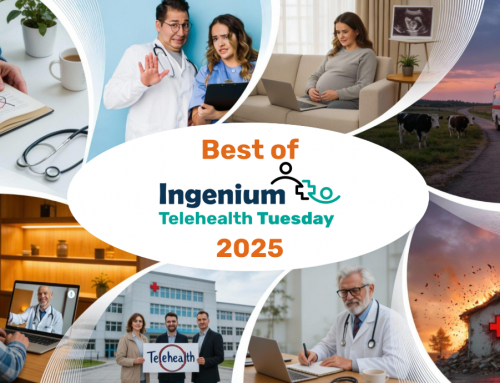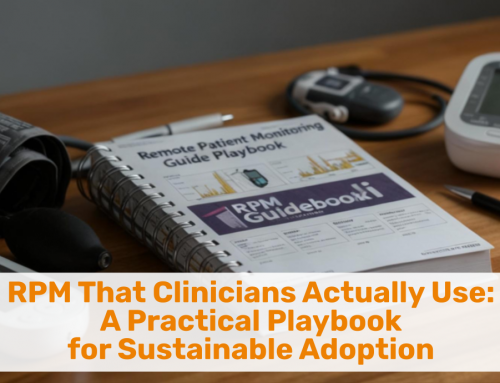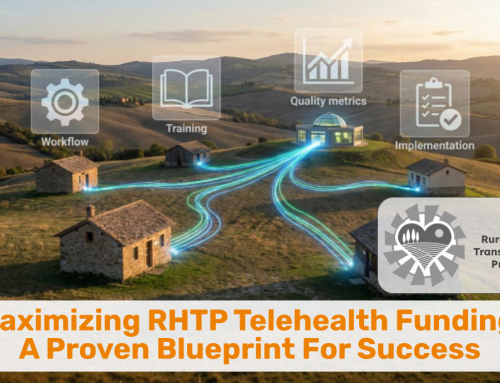— One Level at a Time
Innovation is critical in healthcare — but for most organizations, the real challenge isn’t inventing the next AI-powered diagnostic tool.
It’s adopting innovation that already exists.
Proven innovative solutions are readily available, yet too often they remain unused, under-implemented, or stuck in permanent pilot mode. The problem isn’t a lack of ideas — it’s the inability to adopt innovation in months rather than years (or decades).
That’s why improving your organization’s Innovation Adoption Maturity matters.
You don’t need to be the first to create something new — but you do need to be ready to evaluate, adopt, scale, and sustain innovations that improve care, reduce burden, and drive value.
And the best way to grow that capability is one maturity level at a time.
From Model to Assessment
In the last two articles, I introduced a new tool to help health systems embed innovation adoption into their organizational DNA:
-
Accelerating Innovation Adoption: An Innovation Maturity Model — which laid out the seven levels of innovation maturity and the 12 hallmarks that underpin sustainable innovation capability.
-
Assessing Your Innovation Maturity Gap — which offered definitions for each hallmark at every level and guidance for facilitating a meaningful leadership team self-assessment.
This week, we’re taking the next step: applying the framework in practice.
A Leadership Team Takes Inventory
Let’s imagine a healthcare organization that’s ready to take innovation more seriously.
They convene a cross-functional group — executives, clinical leaders, operational managers, and IT — and dedicate an hour to conduct an honest self-assessment across the 12 innovation hallmarks.
They follow the process outlined last week:
-
Review the maturity model and definitions for each hallmark
-
Independently rate where they believe the organization currently sits
-
Compare views and discuss
-
Come to consensus (even if not everyone fully agrees)
-
Capture the results in a simple maturity map
The result is not just a score — it’s a snapshot of the organization’s innovation posture.



An Organization at the “Aware” Maturity Level
Here’s what their snapshot reveals:
At the leadership level, senior leaders greenlight some innovation adoption projects — but they are not consistently driving them (6. Leadership Engagement: Approving – Level 2). There is a basic strategic framing in place, but it lacks focus, funding, or dedicated roles (1. Innovation Strategy: Aspirational – Level 2).
On the other hand, the organization is not actively looking for new ideas or scanning for innovation (2. Innovation Scanning: Blind–0).
At the foundation, the situation is shaky, too: The organization notices problems as they arise (3. Problem Definition: Noticed–1), but lacks a method for analyzing root causes. Prioritization of problems or projects is essentially random (4. Prioritization: Random–0) — driven by gut feeling or who’s asking loudest.
While leadership is somewhat engaged, clinicians are often involved too late and rarely shape decisions (5. Clinician Involvement: Informed-1).
There are some early signs of structure (8. Process Discipline: Emerging–2), but cultural hesitation slows progress (7. Culture & Mindset: Cautious– 1). The organization resists experimentation and lacks support for standardization.
Next, deployed innovation tends to remain on the periphery: New ideas live in pilots or special projects, but don’t change core workflows (9. Integration with Operations: Adjacent–1) as Change Management (10.) is minimal (Level 1).
Performance Management (11.) also merely happens anecdotally (Level 1), which means that even when ideas succeed, lessons aren’t formalized or scaled. Unsurprisingly, this means that sustainability depends on a few passionate individuals, but is not built into systems (12. Sustainability: Person-Dependent-1).
Taken together, the organization’s Innovation Adoption Maturity lands at Level 1 – Aware, defined in our first article as:
“The organization recognizes the value of innovation and may include it in vision statements or leadership talking points. But there is no consistent support structure to act on those intentions. It is good intention with no backing.”
While this may not reflect how leadership wants to see itself, it provides a critical starting point for progress.
What Comes Next: Don’t Jump to Running
At this stage, leadership may be tempted to set bold aspirations:
-
“Let’s aim for Level 5 – Strategic!”
-
“Let’s build a fully funded innovation center!”
-
“Let’s get clinicians to lead every project!”
But that’s not how maturity growth works.
In our experience, “Level 4 – Aligned” — is the true tipping point. At that level
“Innovation efforts are clearly tied to organizational priorities. Processes exist for identifying and managing initiatives. There is coordination across departments, and innovation is integrated into planning and budgeting cycles.”
However, trying to leapfrog several maturity levels — or elevate just one hallmark — often backfires. All 12 hallmarks are highly interdependent. Advancing one far ahead of the others creates friction instead of momentum.
The real wisdom of the maturity model is this: Progress happens one level at a time.
It’s not about perfecting innovation. It’s about building readiness — systematically.



Creating Maturity Alignment
Given this organization’s current profile (mostly at Level 1, with a few hallmarks at Level 2), the best next move is to bring all hallmarks to “Level 2 – Reactive”. From there, they can leapfrog Level 3 and grow expediently into “Level 4 – Aligned”.
In the next article, we’ll lay out the specific, achievable steps, e.g., to go from “blind to exploratory” when it comes to Innovation Scanning (2.) or from “anecdotal to basic” for Performance Management (11.).
Are you ready to assess your organization’s Innovation Adoption Maturity? For the remainder of 2025 we are giving away one free Innovation Maturity Assessment and consultation per quarter. First come, first served!








To receive articles like these in your Inbox every week, you can subscribe to Christian’s Telehealth Tuesday Newsletter.
Christian Milaster and his team optimize Telehealth Services for health systems and physician practices. Christian is the Founder and President of Ingenium Digital Health Advisors where he and his expert consortium partner with healthcare leaders to enable the delivery of extraordinary care.
Contact Christian by phone or text at 657-464-3648, via email, or video chat.






